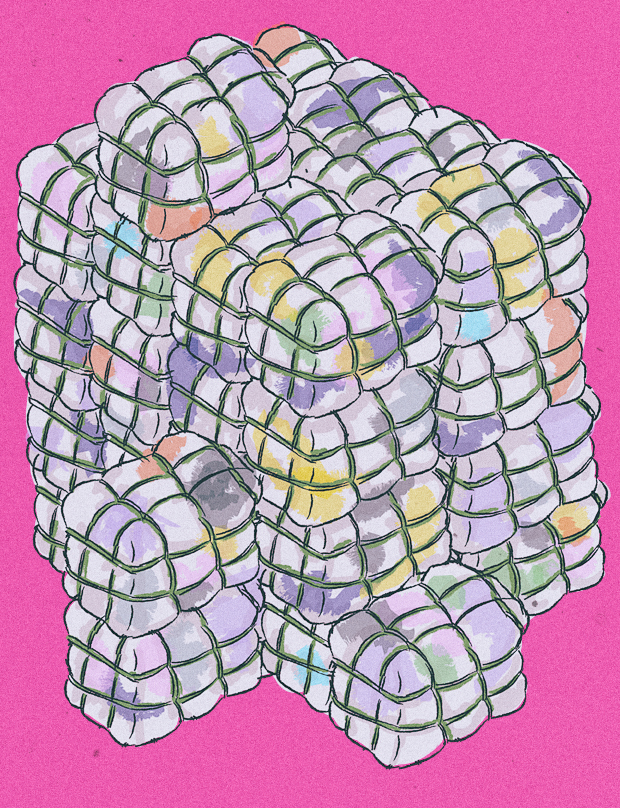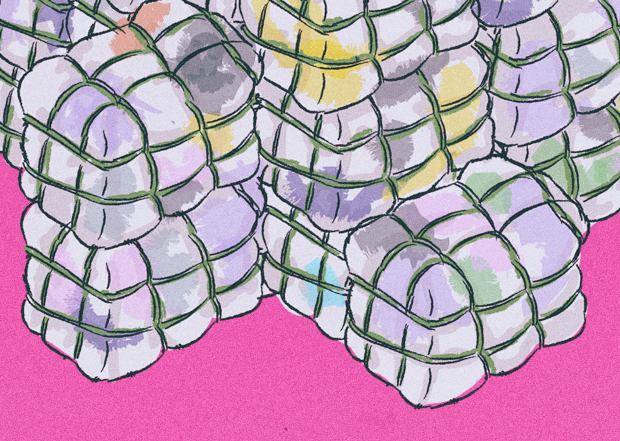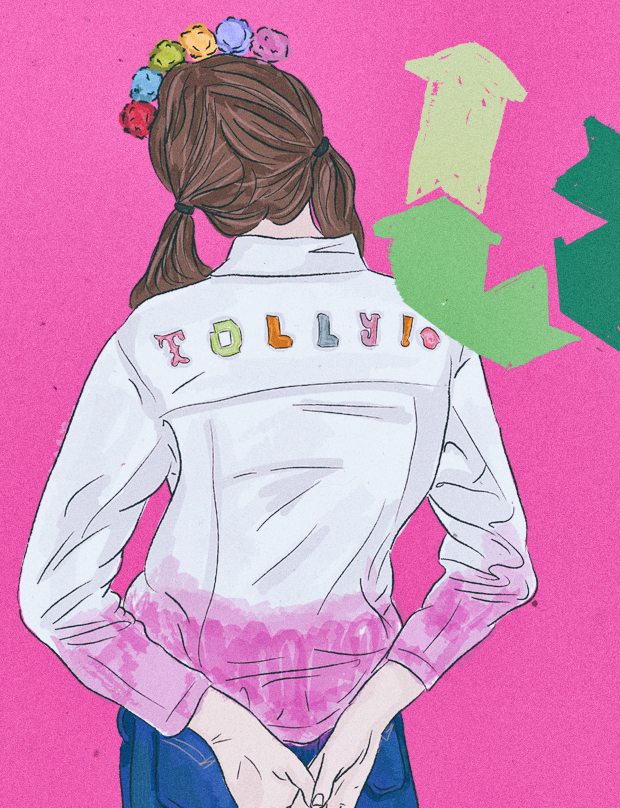In my blog post about whether having fewer clothes actually makes your wardrobe more sustainable, I mentioned that charity shops might not be the best option for decluttering your wardrobe. I promised a blog post about it, so here we go…

Don’t get me wrong, I love charity shops. I have absolutely nothing against them being scattered around full of hidden gems and cheap as chips clothing ready to be worn. Of course I’m not going to start stopping you from shopping in them because not only does it generate money for charities which do such incredible work for different causes, it also makes for more sustainable shoppers and consumers. I would say most of my wardrobe is second-hand and I’ve written many times about why I want you guys to rediscover pre-loved items, too.
The issue of charity shops doesn’t stem from the shopping or what’s on the shop floor, it stems with what we send to them and what we believe is actually ending up there. I understand that some more local, individual charity shops may not experience what I’m going to discuss and that there is actually a need for more items in order to keep the shop up and running, but for the most part in fact, only 10% of clothing donated to charity shops will actually end up being hung up and put onto rails (according to To Die For by Lucy Siegle). We have to think about it similarly for clothes bins.
I remember a few years ago before ethics and sustainability were in my mind, I watched a documentary by the BBC about what truly happens to our clothes once they’re collected from places like clothes bins. I’ve started learning more about this journey not only from the aforementioned book, To Die For, but also from a new read of mine, Clothing Poverty, which describes this in its first chapter.
The clothing that can’t be sold in charity shops or genuinely recycled, is often shipped off in plastic-wrapped bulk bales to areas of Africa. The documentary I watched explored the capital of Ghana in West Africa where every three days, bales are delivered. They met a seller who purchases these bales, the t-shirts and trousers of which had all been purchased through UK charities. Our donations are bought for profit and then delivered to developing countries for locals to purchase themselves and once again sell on, in order to gain income.
You might be thinking at this point that it’s a great way to keep people afloat? Well, actually, there’s a huge risk in purchasing a bale. In To Die For, Lucy explains how one seller could only look through the plastic wrapping to work out what they would be able to sell on. When the communities are already suffering from poverty, they have to rely on what the sorters of our donations have decided to send on meaning that if the clothes are unwanted, they have technically wasted money they could have used to keep providing for their family.

It also adds to the decline of the fashion and textile industry in these areas due to the fact that the poor rely so heavily on our cast-offs to wear. After telling my dad this, he said to me that “It now makes sense why we see European brands and football shirts being worn in documentaries just like that”.
This is only a brief introduction into the cycle of where our donations end up. We might think when we do a wardrobe clear-out that we’re making the most conscious decision of sending them off elsewhere, but really, due to the amount of clothes being thrown out, there are many downsides to doing just that. I’ve watched a couple of YouTube videos about spring cleaning recently and it shows how easy it can be to dispose of an item we don’t want, to a charity shop or a clothes bin because we then believe we are no longer responsible for that item – it will go towards something good. I believe we need to stop relying so heavily on these easy-outs and start not only making much better, greener decisions, but also start profiting from our clothes ourselves.
Having a ‘closed loop’ industry is a big aim for many (where everything that is created is then recycled and put back into the cycle) and it seems to start with focusing on where our clothes are coming from – so why aren’t we focusing on where they go too? I’ve listed a few alternatives which might help you the next time you go to sort out what you already own…

Depop & eBay…
If you want to start profiting from your own clothes, one of the more modern ways of doing so is by creating a Depop or eBay shop. You can sell on items, name your price or start an open bid, and know that the person who will be receiving them will know exactly where it came from. You’ll earn a small (or large – depending on what you sell) amount and the more you sell, the easier it will become to sell in the future too.
Depop also works a bit like Instagram so if you’re not up for the fees and layout of eBay, that might be the one for you. Many bloggers and influencers use it for their followers to shop their wardrobes, so it’s great for buying as well!
Jumble, Garage & Carboot Sales…
I never know which phrase to use – my mum introduced me to the word ‘jumble’, I know that ‘garage’ is used in the US and I know that in the UK ‘carboot’ is very specific to fields full of cars with clothes hanging out the back, but really what I mean is; selling your clothes within your local community. Get out and join in with an event and pass on your clothes to those in your area. Go to specific sales for clothes or if you own a lot of vintage, sign yourself up to a vintage market. There are so many options and I’m sure you can find somewhere to sell most days of the week.
Clothes Swaps…
Not as common as the previous alternative, but clothes swaps are a thing. Nobody is left empty handed because you swap clothes between friends or Facebook groups (a good place to find them), almost like scratching someone else’s back whilst they scratch yours. Not only are these events fun and different, they’re almost always satisfying. It adds a story and some sentimentality to what you add to your wardrobe and what somebody else takes from it.

~ HOW I UPCYCLED WITH DYLON DYES ~
Friends & Family…
Speaking of friends and Facebook, why not donate your clothes to those who you know best? Not only will you immediately know who the item will suit, they’ll appreciate the offer and it won’t go to waste. This is especially good if you have newer items in your wardrobe so it will feel more like a gift than just a hand-me-down, which can often create a stigma in the realm of second-hand shopping.
Upcycle it!
There’s a big difference between upcycling and recycling. Upcycling involves giving an item a new lease of life. Maybe a garment has lost its colour and needs some dye to brighten it back up? Maybe the only reason you’re deciding to pass it on is because it has a hole and some buttons missing? You might still love it, which means it only takes a bit of DIY to keep it from losing its place in your wardrobe.
Take on the ‘make do and mend’ mindset and get out a needle and thread or find someone who might like to upcycle it for you! You can always take a now ill-fitting item to a tailor and get it reworked. There are so many choices to avoid your favourite or unworn pieces being wasted.
What do you do with your old clothes? Let me know in the comments!
Just letting you know I’ve added some more brands to my ethical directory. I’m really happy with how well receieved it’s been, so I hope you like the new additions. Happy ethical shopping!








11 Comments
I studied sustainability and environmental management. I did my dissertation on sustainable fashion and consumerism. Argueing that the solution is not sustainable fashion only, is to decrease consumerism in the fashion industry. I loved the research on it. I use Clothing poverty a lot as well as other resources. The True Cost is a good film to watch as well if you have not watched it already. Thank you for the article!
No worries at all! Clothing Poverty is a great in-depth read, for sure.
Literally just wrote on article on the same issue! http://theladiesnetwork.com.au/the-op-shop-allure-friend-or-foe/
Love the alternatives you’ve provided 🙂
Aw great! Thank you 🙂
Hey Hannah, great article! Freetown Fashpack has been added to my list of fashion docos to watch.
Wonderful and very helpful post! Love this. 🙂
Nabila // Hot Town Cool Girl
Aww thank you! So glad it was helpful 🙂
Excellent post Tolly. Love the graphics, and your message comes across loud and clear.
Thanks 🙂
Excellent article as ever Tolly. Loads of great tips. I think clothes swaps are great (especially for kids stuff!) but having been to a few, I know that most people give way more than they take – meaning lots then gets passed on to charity shops anyway… So if anyone is reading this and fancies going to a local swap, don’t be afraid to take plenty too! It’s not greedy, it’s ethical! Xx
Intttteresting. Good tip 😉 x